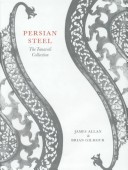The Iranians were among the earliest peoples to work with iron, and steel itself plays an important part in the mythology of that country. It was also favoured by Islam, and steel appeared in the fittings of mosques and shrines as well as in item of personal religious use, such as amulet boxes. Nevertheless, the rarity of surviving early steel and the lack of depictions of it in Islamic art have contributed to its neglect relative to bronze and brass artefacts, which have found more favour with collectors and historians alike. This multidimensional study attempts to redress this imbalance. Taking as its starting-point the Tanavoli Collection of iron and steel objects, supplemented in important areas by items from the Ashmolean Museum, it combines wide-ranging historical coverage of the Iranian iron- and steel-making industries, from mining to trade, with a scientific account of the technologies involved. Medieval Arabic texts on metal-working have been examined in the light of modern understanding of the manufacturing processes, and more than 70 items from the collection subjected to metallurgical analysis.
The discussion of arms and armour - the one group of steel objects to have received much attention - aims to unify military and art-historical aspects. The authors have also attempted to clarify the English nomenclature of metal-working. All catalogued items are illustrated and grouped by function, and the development of each type is described. An account of the work of some contemporary craftsmen carries this study of steel-making in Iran into the present century.
- ISBN10 0197280250
- ISBN13 9780197280256
- Publish Date 30 November 2000
- Publish Status Transferred
- Out of Print 4 May 2021
- Publish Country GB
- Imprint Oxford University Press
- Format Hardcover
- Pages 600
- Language English
